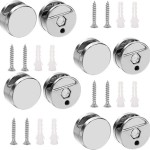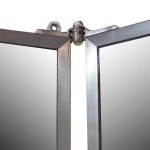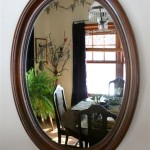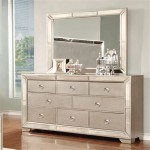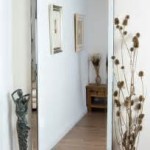Best Glue to Attach Mirror to Wood
Attaching a mirror to wood requires an adhesive that provides a strong, lasting bond while also considering the delicate nature of the mirror. Choosing the wrong glue can lead to unsightly blemishes or even damage the reflective backing. This article explores various adhesive options, highlighting their strengths and weaknesses to help determine the best glue for specific mirror-to-wood applications.
Mirror Mastic
Mirror mastic is a specialized adhesive specifically formulated for adhering mirrors to substrates like wood, metal, and concrete. Its thick, non-acidic formula offers several advantages. Firstly, it provides a high-strength bond capable of supporting the weight of even heavy mirrors. Secondly, its non-acidic properties prevent damage to the mirror's silver backing, eliminating the risk of black edge or spot discoloration that can occur with other adhesives. Thirdly, mirror mastic is designed to accommodate slight imperfections in the mounting surface, allowing for a secure bond even on slightly uneven wood.
When using mirror mastic, it’s crucial to follow the manufacturer's instructions regarding application and curing time. Proper surface preparation is essential for optimal adhesion. This usually involves cleaning both the wood and the back of the mirror with a suitable solvent to remove dust, grease, or any other contaminants. While mirror mastic offers excellent performance, users should be aware of its relatively long curing time, which can sometimes extend to several days before the bond reaches full strength.
Construction Adhesive
Construction adhesives, often available in cartridge form for use with a caulking gun, provide another viable option for attaching mirrors to wood. These adhesives are generally formulated for high-strength bonding and are often water-resistant, making them suitable for applications where moisture might be a concern. Certain varieties, like those based on polyurethane, offer excellent gap-filling capabilities, which can be advantageous when working with slightly uneven surfaces.
When selecting a construction adhesive for mirror mounting, it's vital to choose a neutral-cure formula. Acidic variants can react with the mirror backing, causing discoloration or even damage. Before proceeding with the application, testing the adhesive on a small, inconspicuous area of the mirror is recommended to ensure compatibility. Proper ventilation is also important when working with construction adhesives, as some types release strong fumes during curing.
Double-Sided Tape
For lighter mirrors and applications where extreme strength isn't a primary concern, double-sided tape specifically designed for mounting mirrors can be a convenient and effective option. These tapes usually feature a high-tack adhesive on both sides and offer a relatively quick and easy installation process. The application is generally straightforward, involving cutting the tape to size and applying it to the back of the mirror before pressing it firmly onto the wooden surface.
While double-sided tape offers convenience, it's important to choose a product specifically designed for mirror mounting. General-purpose double-sided tapes may not provide adequate adhesion or could contain chemicals that damage the mirror backing. It's also important to carefully consider the weight and size of the mirror when choosing this method, as the bonding strength of double-sided tape may not be sufficient for heavier mirrors.
Silicone Adhesive
Silicone adhesives, known for their flexibility and resistance to moisture and temperature fluctuations, can also be used for attaching mirrors to wood. Neutral-cure silicone sealants, in particular, offer a safe and effective bonding solution that won't damage the mirror backing. The flexibility of silicone can be beneficial in applications where slight movement or expansion and contraction of the wood is anticipated.
When using silicone adhesive for mirror mounting, ensuring proper surface preparation is essential for achieving a strong bond. Cleaning both surfaces with a suitable solvent helps remove contaminants that can interfere with adhesion. As with other adhesives, it's crucial to follow the manufacturer's instructions regarding application and curing time. While silicone provides excellent durability, it’s important to remember that some types can be difficult to remove if adjustments are needed.
Epoxy
Epoxy adhesives, known for their exceptional strength and bonding capabilities, are a viable option for heavy mirrors or applications requiring maximum durability. Two-part epoxy systems provide a very strong bond that is resistant to moisture, temperature changes, and vibrations. However, working with epoxy requires careful mixing of the two components and precise application due to its relatively short working time.
When considering epoxy for mirror mounting, selecting a non-acidic formula designed for use with delicate materials is crucial. As with other adhesives, testing the epoxy on a small, inconspicuous area of the mirror is recommended to ensure compatibility. Because epoxy cures to a very hard and rigid state, it’s important to ensure the wood surface is smooth and even to prevent stress on the mirror.

4 Easy Steps To Glue Mirror Wood
What Is The Best To Use Glue Mirrors A Wall Quora
Mirror Adhesive Adiseal Strong Glue For

How To Glue A Mirror Wood Fast Effective Start Woodworking Now

Evo Stik Solvent Free Light Grey Mirror Adhesive 290ml Diy At B Q

How To Glue A Mirror Wood Fast Effective Start Woodworking Now

Mirror Silicone Sealant Diy Bostik

How To Use Mirror Adhesive Silicone

Mirror Fix 100 Adhesive Manufacturers

How To Make A Simple Mirror Frame With Wood Upgrade An Old


